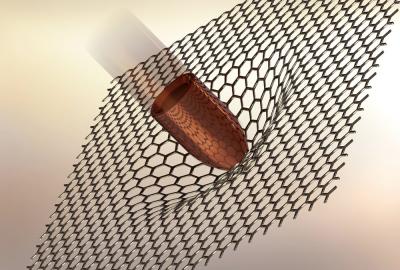A combination of strong and weak GO flakes can yield stronger GO paper
Researchers from Northwestern University have recently shown that graphene oxide paper can be made by mixing strong, solid GO flakes with weak, porous GO flakes. This finding may aid the production of higher quality GO materials, and also sheds light on a general problem in materials engineering: how to build a nano-scale material into a macroscopic material without losing its desirable properties.
 Large single layers of GO wrinkle easily, leaving breakable gaps. Small, hard flakes don’t integrate well. image by Northwestern
Large single layers of GO wrinkle easily, leaving breakable gaps. Small, hard flakes don’t integrate well. image by Northwestern
To put it in human terms, collaboration is very important, said Jiaxing Huang, Northwestern Engineering professor of materials science and engineering, who led the study. Excellent players can still make a bad team if they don’t work well together. Here, we add some seemingly weaker players and they strengthen the whole team.





